Sowing seeds directly in open ground doesn't come without its drawbacks. The fluctuating weather conditions at the start of the season, along with predators and fungi, can cost you precious time during this crucial spring period. Sowing in pots allows you to save valuable time and control growing conditions to encourage germination and the early growth of your seedlings. Discover our tutorial to get ahead this season and create a vegetable garden that will make your neighbours envious!
What is pot sowing?
Pot sowing involves planting seeds directly in a pot or container for future transplantation into open ground in the garden. It differs from broadcast sowing or row sowing, which are done directly in open ground in a cold frame or garden.
This technique is commonly used in spring for plants that don't tolerate bare-root transplanting or need to start their growth in warm conditions.
It also generally applies to plants that take up a lot of space in your vegetable garden and shouldn't be sown in large quantities.
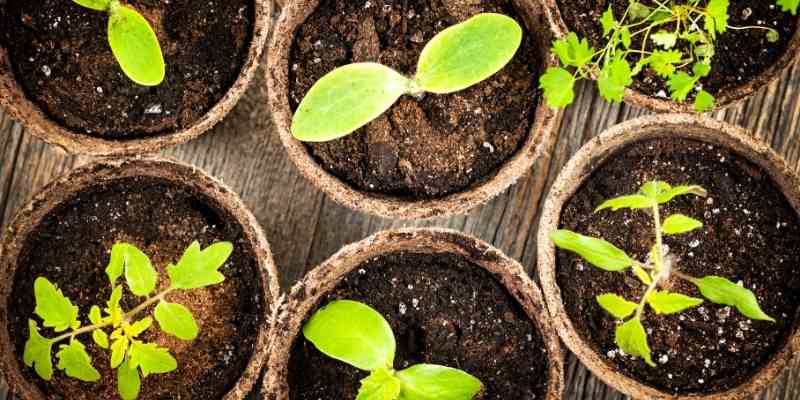
Which plants are suitable?
This sowing method applies to several classic garden vegetables. It's used for species with large seeds or where the number of plants in the garden is limited due to their size.
Notable examples include tomatoes, aubergines, peppers, all members of the cucurbit family (pumpkins, courgettes, squash...), sunflowers, artichokes, peas, and broad beans.
Some perennial plants can also be sown in pots, such as zinnias, nasturtiums, lupins, cosmos, etc.
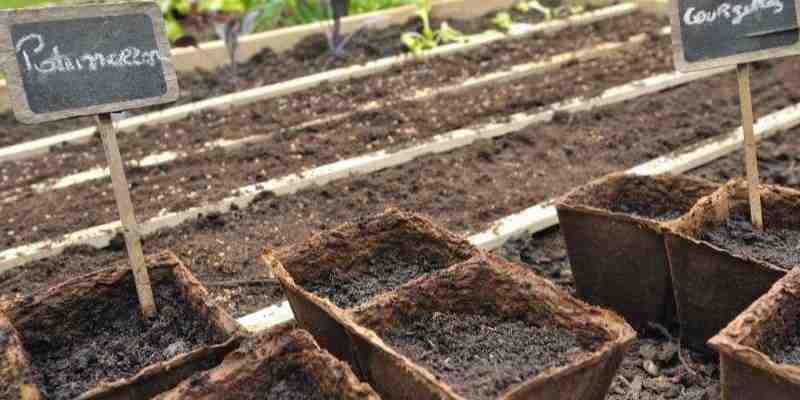
Sowing cucurbits in biodegradable pots
How to proceed?
First, obtain containers. You don't necessarily need to buy pots. You can use cardboard toilet roll tubes, yoghurt pots, newspaper, or a paper potter...
There are also biodegradable peat pots that can be left in the ground during transplantation.
Next, get good-quality seed compost. This should be impeccable to ensure good germination. Good seed compost is light, fine, well-draining, and healthy.
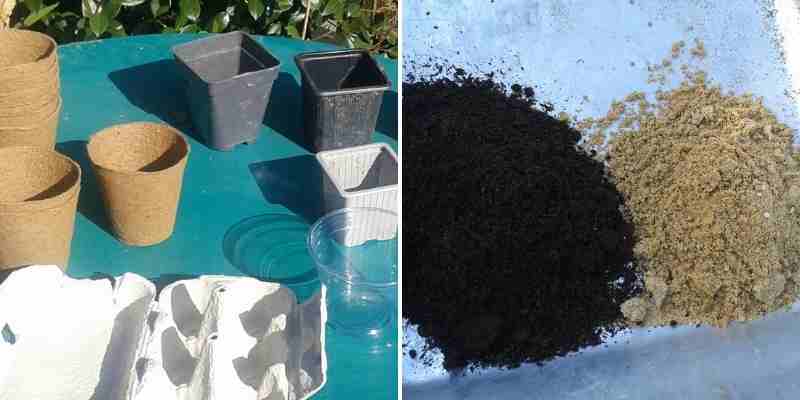
You can use different types of pots, as long as they're deep enough. Mix sand into your substrate to lighten it.
If you decide not to buy commercial "seed compost", ensure your homemade compost is well-rotted to prevent your seeds from being attacked by pathogenic fungi (damping off). Adding sand or perlite is always beneficial to lighten the mix for seeds.
Fill the pots with seed compost or homemade substrate and level the surface with your hand.
Then make a hole using a pencil or your finger. Be careful not to cover the seeds too deeply! Generally, a depth of 2-3 times their diameter is sufficient. Remember that in nature, many seeds germinate on the soil surface without being buried.
Place 1-3 seeds per pot and water the containers without completely saturating the soil. Overly compact and wet substrates encourage seed rot.
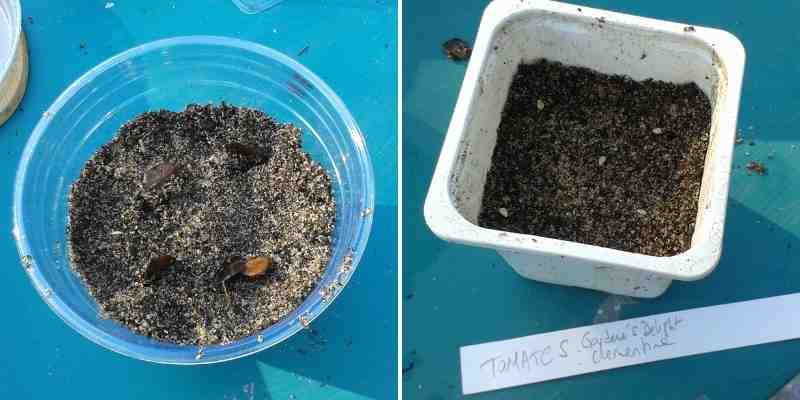
Sowing cobaea and tomatoes in pots
Use a fine rose watering can or soak the pots by letting the compost absorb water through capillary action. Let them drain completely.
Seeds don't appreciate alternating wet and dry conditions. To prevent this, cover your containers with clear plastic or place them in a mini greenhouse to increase temperature, maintain humidity, and stimulate germination.

Water gently and cover your pots
Place them in light and near a heat source.
Once the seedlings emerge, remove the plastic and place your seedlings in a very bright location.
Otherwise, they'll become leggy, fragile, and weak. Transplant potted plants when roots emerge in large numbers from the drainage holes or when the plant starts to yellow, indicating exhausted nutrients in the compost.
What are the advantages/disadvantages of this technique?
Advantages
- The gardener can control the main growing parameters: temperature, humidity, and substrate type. This is much harder outdoors with unpredictable weather.
- You'll also have better control over pests and pathogens that attack seedlings. Keeping plants separate prevents disease spread.
- Sowing in pots saves seeds by avoiding over-sowing.
- Transplanting pot-sown seedlings causes much less stress as roots are hardly damaged during repotting.
- Sowing in pots lets you keep the strongest seedling if you've sown multiple seeds in one pot.
- This technique also extends the season by allowing earlier germination in warm conditions.
Some disadvantages
- The small soil volume in pots dries out quickly. You'll need to monitor watering carefully, especially if plants are in a greenhouse.
- Sowing in pots requires organisation as it takes up space! Remember to label your pots clearly to avoid mix-ups!
- Transplanting to open ground is simple but will inevitably require time.
- Commercial seed compost can be quite expensive.
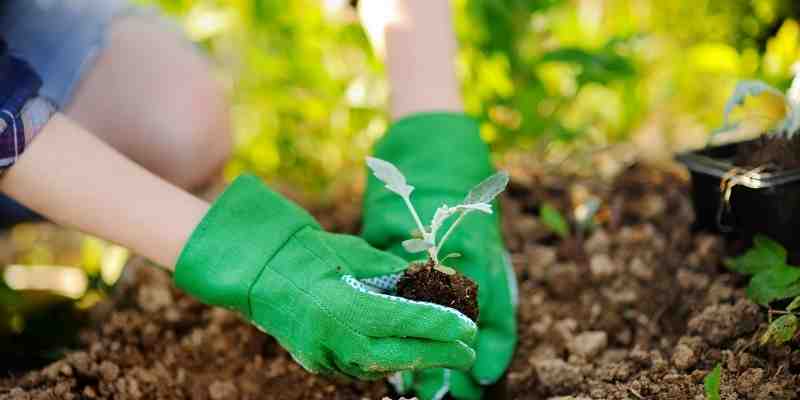
Sowing in pots requires extra time for garden or vegetable patch transplantation
Most root vegetables can't be grown in pots, even at the start. Avoid sowing carrots, parsnips, black radishes, salsify or other root crops in pots.
Before transplanting your pots into open ground, regularly take them outside to acclimatise them to cooler temperatures. This will prevent excessive stress during final transplantation outdoors.
Also watch out for late spring frosts!


































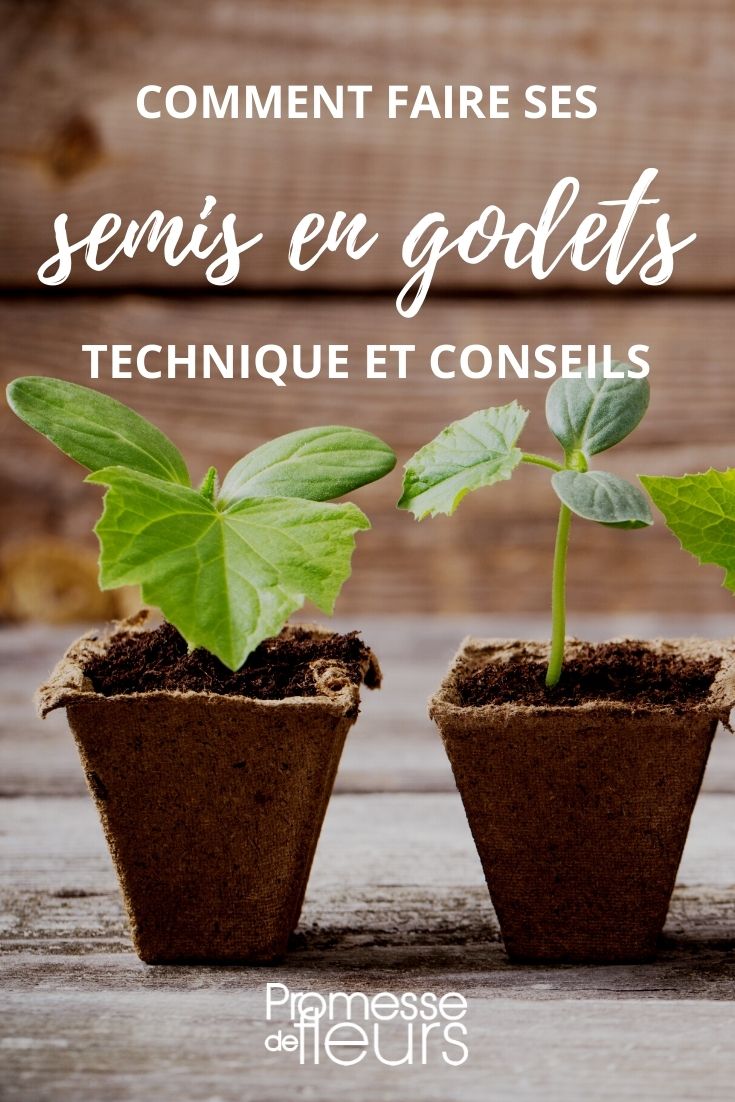
Comments